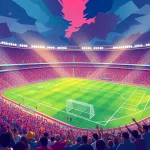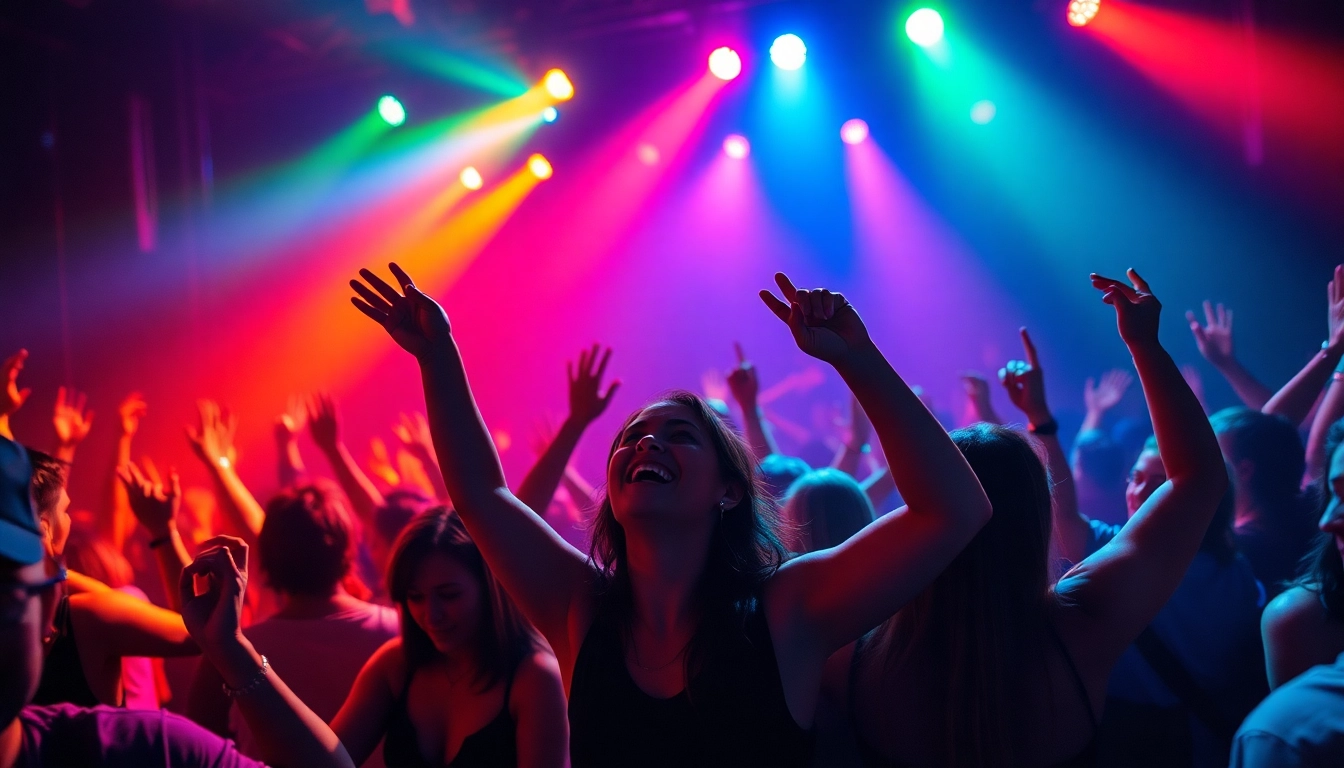Understanding Live Music Fans
The heartbeat of any vibrant music scene lies in its fans. Live Music Fans are not just passive spectators; they are the lifeblood of concerts, festivals, and gatherings, often forming communities that thrive on shared experiences. This article delves deep into the world of live music fans, exploring their significance, the demographics shaping their preferences, and the hurdles they face in an ever-evolving entertainment landscape.
The Importance of Community for Live Music Fans
Community is at the core of what makes live music truly special. For many fans, attending concerts transcends the mere act of listening to music; it fosters a sense of belonging and connection. These shared experiences create bonds that often last a lifetime, woven from the electric atmosphere of live performances and the collective euphoria that music evokes.
Music venues, be it small clubs or sprawling festival grounds, serve as sanctuaries where fans can unite. The communal energy pulsates through the crowd, as strangers become friends over their love for a band or genre. This phenomenon is crucial for building loyalty around artists and brands, making the experience not just memorable, but essential for a thriving music culture.
Demographics and Trends Among Live Music Fans
The landscape of live music fans is incredibly diverse, encompassing various ages, backgrounds, and musical tastes. Recent studies show that younger audiences, particularly those aged 18-34, are more inclined to attend live music events compared to older demographics. Additionally, there is a noticeable shift in the types of events favored; while traditional concerts remain popular, festivals have surged in popularity, largely due to the multiple acts they feature and the immersive experience they provide.
- Age Groups: Millennials and Gen Z are driving the trend towards experiential entertainment, often preferring events that offer unique or themed experiences.
- Gender Dynamics: There is a growing gender balance among concert-goers, with female fans increasingly attending shows and festivals, shaping the culture and marketing strategies of the industry.
- Technological Influences: The rise of music streaming services has transformed how fans discover and engage with music, further influencing live attendance rates.
Challenges Faced by Live Music Fans Today
Despite the vibrant community surrounding live music, fans face numerous challenges. One significant hurdle is accessibility, both in terms of the cost of tickets and the geographic limitations of venues. Many fans struggle to afford high ticket prices, which have risen dramatically, particularly for popular acts and festivals.
Moreover, safety concerns have intensified, especially in light of the COVID-19 pandemic. Fans are increasingly scrutinizing health protocols and venue safety measures before deciding to attend events, which impacts attendance numbers and overall fan engagement.
Finally, the saturation of the market—with countless acts touring simultaneously—can make it difficult for fans to choose which events to attend and for artists to stand out amidst the noise. These challenges highlight the need for organizers and artists to innovate and create engaging experiences tailored to their fan bases.
Creating Memorable Experiences for Live Music Fans
In today’s competitive environment, creating unforgettable experiences is crucial for attracting and retaining live music fans. Understanding fan psychology and integrating their feedback into the planning process can bear significant fruits for both venues and artists alike.
Innovative Concert Ideas for Engaging Live Music Fans
Engagement begins long before fans set foot in a venue. Innovative concert ideas can enhance the overall experience, making it more memorable and shareable.
Some successful concepts include:
- Themed Concerts: Create an immersive environment that aligns with a band’s music or a specific era, encouraging fans to dress the part and enhance their engagement.
- Interactive Elements: Utilize technology, such as augmented reality (AR) or virtual reality (VR), to create an interactive concert experience where fans can participate in the show.
- VIP Packages: Offer exclusive packages that allow fans to meet artists, access backstage areas, and enjoy premium experiences that deepen their connection to the event.
How to Foster Interaction During Live Events
Interaction is a key component of creating a vibrant atmosphere during live events. From the moment fans enter a venue, opportunities to engage with each other and the artists can significantly enhance their experience.
Some effective ways to foster interaction include:
- Social Media Integration: Encourage fans to share their experiences on social media during the show by using unique hashtags or offering incentives for posts and shares.
- Live Polling and Requests: Utilize live polling systems where fans can vote on setlists or song selections, creating a sense of involvement and ownership of the event.
- Networking Areas: Designate zones within venues for fans to meet and socialize, establishing collaborative environments that extend the community feel beyond the stage.
Case Studies of Successful Fan Engagement
Examining successful case studies can provide valuable insights into effective engagement strategies. One notable example is the “Harry Styles: Live on Tour” event, where innovative use of props and audience engagement turned each concert into a remarkable theatrical experience.
Another case study is the essential role of social media engagement seen in Taylor Swift’s tours. By offering fans pre-sale tickets and exclusive merchandise based on social media interaction, Taylor has successfully cultivated her fan community into a highly engaged fanbase that eagerly participates in ongoing conversations about her music.
Leveraging Social Media to Connect with Live Music Fans
Social media platforms have fundamentally transformed how live music fans connect with artists, each other, and the industry at large. Utilizing these platforms effectively can significantly enhance engagement and deepen fan loyalty.
Platforms Preferred by Live Music Fans
Understanding which platforms resonate most with live music fans is crucial for strategic engagement. As of 2023, platforms like Instagram, TikTok, and Twitter are vital for music discovery and fan interaction.
- Instagram: With its visual-centric approach, Instagram is ideal for sharing concert footage, behind-the-scenes content, and fan interactions. Stories and Reels can facilitate real-time engagement during events.
- TikTok: The platform has become a powerhouse for music discovery, with viral challenges often originating from music clips and live performances, connecting fans through creative expression.
- Twitter: This platform serves as a real-time conversation hub, where fans can engage with artists directly, share opinions on events, and participate in trending discussions around live music.
Effective Content Strategies for Engaging Audiences
Crafting compelling content is essential for keeping live music fans engaged. Strategies should focus on creating diverse and interactive content that appeals to various segments of the fanbase.
- Behind-the-Scenes Access: Share insider views of rehearsals, sound checks, and songwriting processes to foster a more personal connection between artists and fans.
- User-Generated Content: Encourage fans to share their experiences from concerts, fostering a sense of community while providing authentic and relatable content.
- Exclusive Contests: Organize competitions where fans can win tickets, meet-and-greets, or merchandise by sharing their concert experiences or favorite tracks, stimulating engagement and excitement.
Building Community Through Online Interactions
Leveraging online interactions can help solidify a community feel around live music brands. Creating dedicated online spaces—be it forums, Discord servers, or Facebook groups—where fans can discuss their favorite shows, share playlists, and plan meetups can enhance their sense of belonging.
Moreover, artists and venues that actively participate in these discussions demonstrate their investment in the fan community, creating a reciprocal relationship that deepens loyalty and trust.
Harnessing Data to Enhance Engagement with Live Music Fans
In an era defined by data, leveraging insights derived from fan interactions and preferences can dramatically enhance engagement strategies. Understanding fan behavior not only improves the quality of experiences but also aids in forming loyal fan bases.
Analyzing Fan Feedback for Better Experiences
Collecting and analyzing fan feedback post-events can offer invaluable insights into areas for improvement. Surveys, social media listening, and direct fan engagement can provide the data needed to refine future events and experiences.
For instance, using tools like NPS (Net Promoter Score) to gauge fan satisfaction can reveal how many attendees would recommend a concert to others, guiding strategies for future engagements. Implementing suggestions from fans will inspire confidence and loyalty, making them feel heard and valued.
Utilizing Analytics to Understand Live Music Fan Behavior
Investing in analytics tools to track engagement metrics, ticket sales, and social media interactions can help artists and venues understand fan preferences better. For instance, tools like Google Analytics can reveal which marketing strategies drive ticket sales, while social listening tools can uncover fan sentiment and trending conversations.
Using this data to tailor marketing campaigns, adjust pricing strategies, and schedule concerts in response to fan demand proves beneficial, making fans feel more connected to the events they choose to attend.
Best Practices for Implementing Changes Based on Data
Data-driven decision-making should be an ongoing process rather than a one-time effort. Implementing systematic reviews of fan engagement and event performance helps maintain a dynamic approach to satisfying beta. Here are key best practices to consider:
- Continuous Feedback Loops: Regularly solicit feedback via online surveys and social media to gather insights that inform programming and overall fan experience.
- Adapt Quickly: Be prepared to pivot strategies based on fan feedback, market trends, and data analytics. An agile approach allows for real-time adjustments that meet fan expectations.
- Collaborate with Fans: Engaging fans in the planning process—from setlists to venue types—creates a more invested community, leading to better attendance and advocacy for future events.
Future Trends in the Live Music Space for Live Music Fans
The future of live music promises exciting developments as it evolves alongside technology and shifting fan expectations. Observing these trends can help venue operators, artists, and promoters anticipate changes and adapt proactively.
The Evolution of Live Events and Fan Expectations
As audiences become more discerning, expectations for live events are rapidly changing. Fans increasingly seek curated, immersive experiences that go beyond traditional concerts. This could mean integrating elements of theatre, art installations, or interactive storytelling to captivate and entertain attendees.
Additionally, with more fans becoming eco-conscious, sustainability in event planning is paramount. Events that prioritize green practices, such as carbon offsets and sustainable merchandise, will likely appeal to today’s socially aware consumer base, adding value to their experiences while easing their environmental footprint.
Technological Innovations Shaping the Music Industry
Technology continues to transform how live music is experienced. Developments in streaming, AR, and VR have the potential to drastically alter concert accessibility. For instance, virtual experiences may allow fans to attend concerts regardless of geographic limitations, while augmented reality could create truly interactive performances that enhance live shows.
Wearable technology is another frontier, enabling fans to connect with the artist’s emotional cues during performances or share real-time experiences with friends and followers, allowing them to feel more involved in the show itself.
How Live Music Fans are Influencing Future Experiences
Ultimately, it is the live music fans themselves who will shape the future of events through their preferences and desires. As they become more vocal about what they want, venues and artists must remain responsive and listen closely to their audience.
By engaging with their fanbase, understanding the changing landscape of live events, and leveraging data insights effectively, the industry can create unique experiences that resonate long into the future, ensuring that live music continues to thrive.









